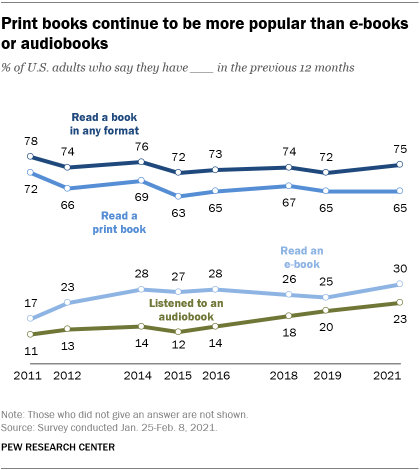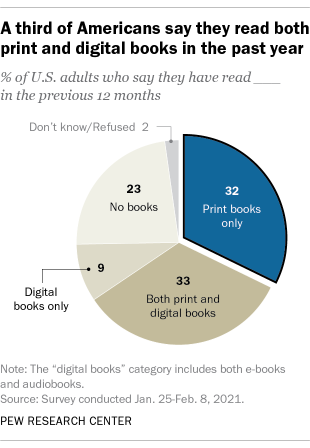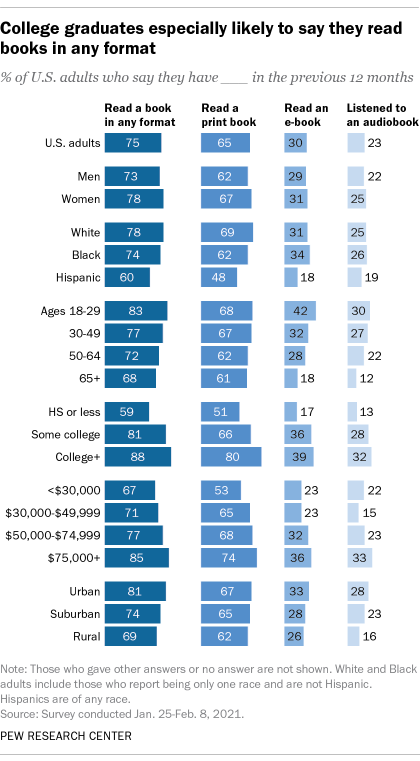
Americans are spreading their book consumption across several formats. The share of adults who have read print books in the past 12 months still outpaces the share using other forms, but 30% now say they have read an e-book in that time frame.
Overall, 75% of U.S. adults say they have read a book in the past 12 months in any format, whether completely or part way through, a figure that has remained largely unchanged since 2011, according to a Pew Research Center survey conducted from Jan. 25 to Feb. 8, 2021. Print books remain the most popular format for reading, with 65% of adults saying that they have read a print book in the past year.
While shares of print book readers and audiobook listeners remain mostly unchanged from a Center survey conducted in 2019, there has been an uptick in the share of Americans who report reading e-books, from 25% to 30%.
Pew Research Center has studied how Americans read books for years. For this analysis, we surveyed 1,502 U.S. adults from Jan. 25 to Feb. 8, 2021, by cellphone and landline phone. The survey was conducted by interviewers under the direction of Abt Associates and is weighted to be representative of the U.S. adult population by gender, race, ethnicity, education and other categories. Here are the questions, responses and methodology used for this analysis.
Americans read an average (mean) of roughly 14 books during the previous 12 months and the typical (median) American read five books in that period, according to the survey. These figures are identical to 2011, when the Center first began conducting surveys of Americans’ book reading habits.
Despite growth in certain digital formats, it remains the case that relatively few Americans only consume digital books (which include audiobooks and e-books) to the exclusion of print. Some 33% of Americans read in these digital formats and also read print books, while 32% say they read only print books. Just 9% of Americans say they only read books in digital formats and have not read any print books in the past 12 months.
Demographic differences in book reading in 2021 are similar to the patterns seen in past Center surveys. For example, adults who have a bachelor’s or advanced degree are more likely to be book readers than those who have only attended some college and those with a high school education or less, and adults ages 18 to 29 are more likely to read books than those 65 and older. At the same time, patterns of book consumption among a few groups changed since 2019. Some examples:
Adults with lower incomes – The share of adults with an annual household income of less than $30,000 who have listened to an audiobook has increased 8 percentage points since 2019 (22% vs. 14%).
Urban adults – The share of American adults living in urban communities who say they have read a book in any format in the previous 12 months grew from 75% in 2019 to 81% now – an increase of 6 percentage points.
The table below covers how different groups reported their reading habits in the survey.
Note: Here are the questions, responses and methodology used for this analysis. This is an update of a post by Andrew Perrin originally published Sept. 1, 2016.







